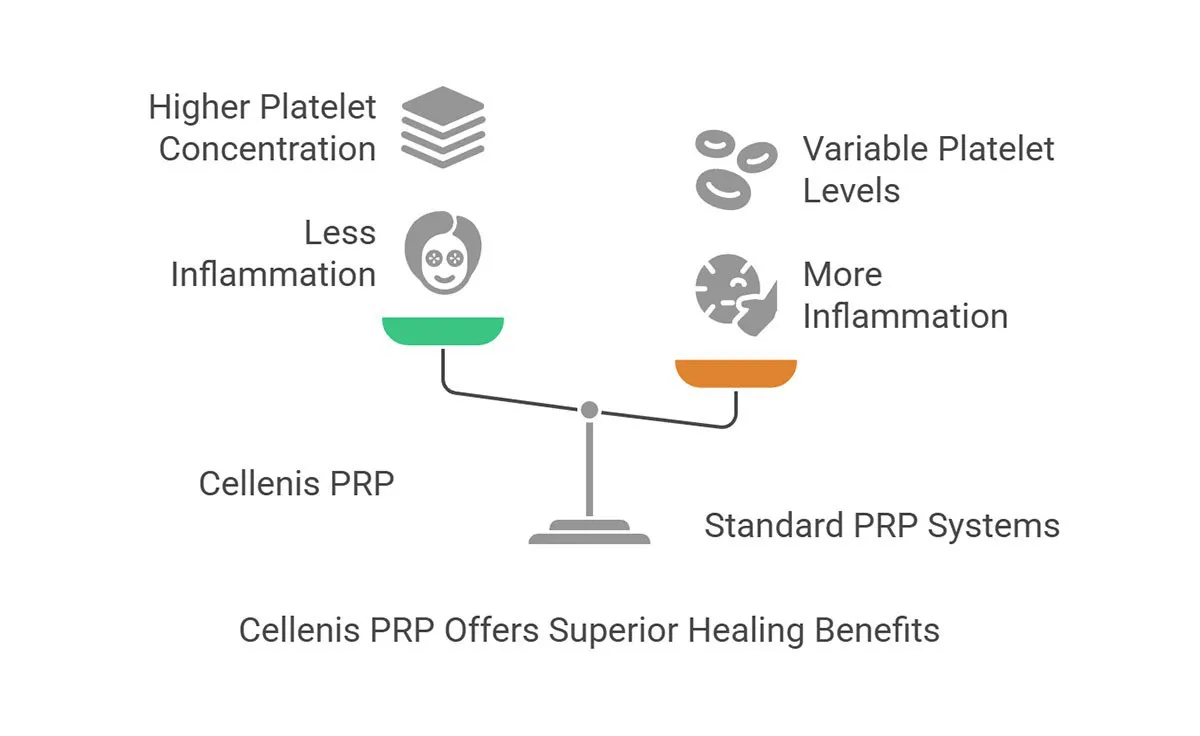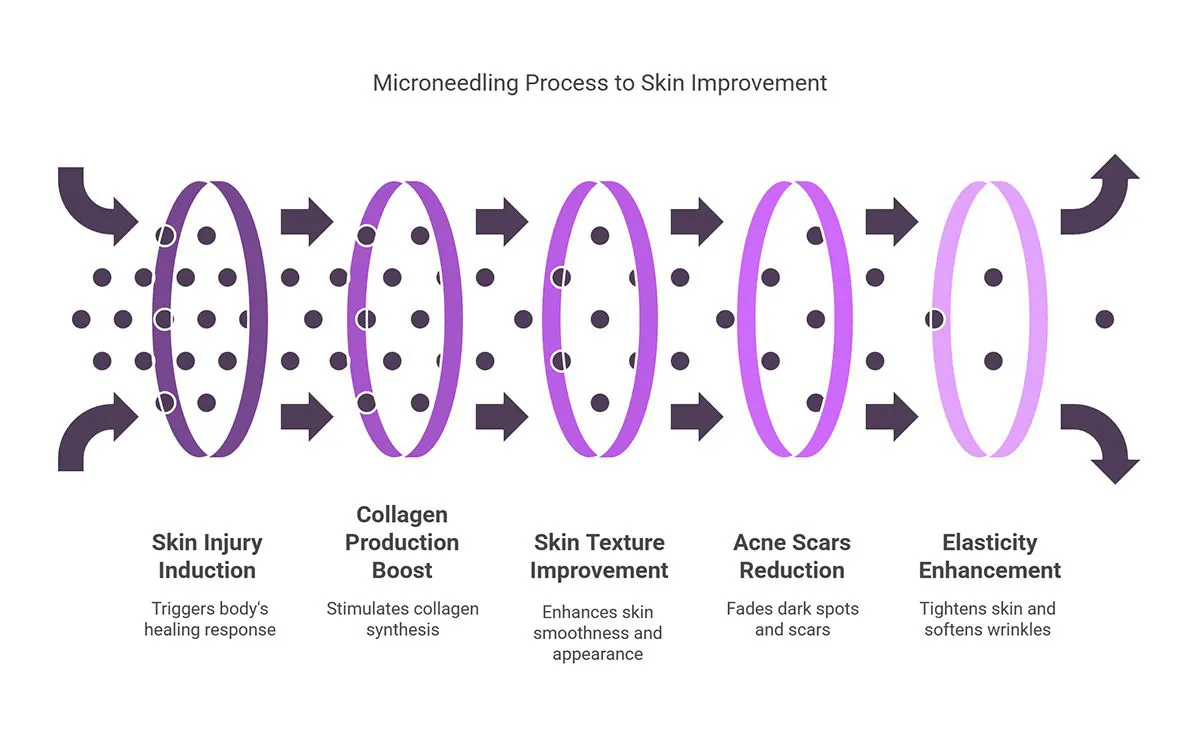What if the answer to hair loss and aging skin wasn’t synthetic fillers or surgery—but your own body? Cellenis PRP uses your blood’s natural growth factors to regenerate tissue, but is it truly the best option?
You want real results, not just promises. With so many treatments—PRP, fillers, lasers, hair transplants—it’s easy to feel lost. Before spending money, you need to know:
Get the answers before making a decision. Let’s dive in.
You want real results, not just promises. With so many treatments—PRP, fillers, lasers, hair transplants—it’s easy to feel lost. Before spending money, you need to know:
Get the answers before making a decision. Let’s dive in.
Ever wondered if your body has the secret to reversing signs of ageing? It does. Platelet-rich plasma (PRP) therapy taps into your own biology to rejuvenate skin, restore hair, and speed up healing—without synthetic chemicals or surgery. Think of it as a turbo boost for your cells, using their natural abilities to repair and regenerate.
Imagine a microscopic army inside your blood, carrying growth factors like little construction workers. These platelets are responsible for healing wounds, repairing tissue, and stimulating collagen production. PRP is simply a concentrated version of these platelets, extracted from your own blood and injected where your body needs a little extra help.
The process? A small blood sample is drawn—just like a routine test. Then, using a high-speed centrifuge, the blood is spun down, separating the platelets from red and white blood cells. What’s left is liquid gold—PRP, packed with growth factors ready to stimulate tissue repair at a cellular level.
Not all PRP treatments are created equal. Cellenis PRP is engineered for purity and potency, yielding a higher platelet concentration than many standard PRP systems. Less inflammation, more regeneration.
PRP doesn’t “fill” like dermal fillers or resurface like lasers—it rewinds the clock from within. Whether for glowing skin, thicker hair, or faster healing, Cellenis PRP is a natural solution with science-backed results.

Aging sneaks up on everyone. One day, your skin feels firm and plump. The next, you’re noticing fine lines, sunken areas, and a little less definition. When it comes to restoring volume and youthfulness, two popular options exist—Platelet-Rich Plasma (PRP) and Dermal Fillers. But they work in completely different ways.
Ever inflated a balloon? That’s fillers. They add instant plumpness by injecting hyaluronic acid (HA) or other materials beneath the skin. Think of them as scaffolding—lifting sagging areas, smoothing lines, and restoring lost volume. Common treatment areas include:
Results are immediate but temporary. Fillers last 6 months to 2 years, depending on the type and area treated. Over time, they dissolve naturally, requiring maintenance treatments.
PRP, on the other hand, is like fertilizer for your skin. Instead of adding artificial volume, it stimulates natural collagen production. Your blood is drawn, processed to isolate platelets, and injected back into targeted areas. Over weeks, your skin thickens, firms up, and repairs itself from within.
Longevity: PRP results take longer to appear but last 6-12 months or more.
Natural Composition: PRP is 100% your own blood, reducing risk of allergic reactions.
Safety: Fillers can migrate or create lumps. PRP is absorbed naturally, minimizing complications.
Go for PRP if you want a natural, gradual rejuvenation. Pick fillers for instant volume and definition. Some patients combine both—using PRP for skin health and fillers for structure.
Want to know which is right for you? Book a consultation today.
Imagine your skin as a worn-out canvas. Years of sun exposure, aging, and environmental damage take their toll. Two treatments promise to bring it back to life: Cellenis PRP and Microneedling. But which one is the ultimate skin reviver?
Think of microneedling as controlled skin injury. A device with hundreds of tiny needles creates micro-punctures in the skin, triggering the body's healing response. The result? Increased collagen production, improved texture, and reduced fine lines.
Microneedling alone is powerful, but adding PRP supercharges the process. PRP is rich in growth factors, drawn from your blood, and injected or applied post-microneedling. It’s like watering a garden—the needling opens the soil, PRP delivers the nutrients.
Healing Time – PRP reduces post-treatment redness and speeds up recovery.
Effectiveness – PRP stimulates deeper regeneration, boosting long-term results.
Synergy Effect – Microneedling creates channels, PRP fills them with healing factors.
Pairing Cellenis PRP with microneedling is the ultimate skin-renewing power move.

If your skin could talk, it might be begging for a reset. Years of sun damage, fine lines, and uneven texture—it all adds up. Two powerhouse treatments promise to turn back the clock: Cellenis PRP and laser therapy. But which one delivers the ultimate glow-up?
Lasers are like precision tools, using light energy to resurface the skin, boost collagen, and break down pigmentation. Depending on the type, some lasers remove the top skin layers (ablative) while others work beneath the surface (non-ablative).
While lasers force the skin to regenerate, PRP works with the body’s natural healing process. Platelet-rich plasma, drawn from your own blood, is injected into the skin to stimulate collagen production from within. No heat. No synthetic chemicals. Just pure, biological rejuvenation.
Downtime – PRP is minimally invasive, while laser resurfacing can take weeks to heal.
Suitability – PRP is safe for all skin tones, while lasers can cause pigmentation issues in darker skin.
Results – PRP takes time but improves skin texture, elasticity, and hydration long-term.
Losing hair isn’t just about looks. It’s confidence, identity—sometimes even a part of who you are. So, when the mirror starts showing more scalp than strands, the big question hits: PRP or a hair transplant? Let’s break it down.
Think of a hair transplant like moving plants from one part of the garden to another. Healthy hair follicles, usually from the back of the head, are surgically extracted and implanted where hair is thinning or missing. It’s a permanent solution, but there are things to consider.
PRP, on the other hand, doesn’t add hair—it revives it. It’s like feeding your scalp the nutrients it needs to bring weak, thinning follicles back to life. Your own blood is drawn, processed to concentrate growth factors, and injected into the scalp to stimulate natural hair regrowth.
Non-surgical – No incisions, no stitches, just injections.
Great for early-stage hair loss – Strengthens existing follicles, preventing further thinning.
Minimal downtime – Mild soreness for a day or two, but back to normal fast.
Choosing a cosmetic treatment isn’t just about science—it’s about you. What do you want? Instant results? A long-term investment in your skin and hair health? If you’re looking for something that works with your body, not against it, Cellenis PRP might be exactly what you need.
PRP isn’t a one-size-fits-all fix, but it’s a powerful tool for the right candidates.
Not everyone is a perfect match for PRP. Sometimes, another approach makes more sense.
This isn’t a quick fix—it’s a long-term game-changer. It regenerates, repairs, and strengthens naturally. If you want something safe, effective, and backed by science, PRP is one of the best investments you can make in your skin and hair health.
Still unsure? The best way to know is by talking to an expert. Book a consultation today and find out if Cellenis PRP is right for you!
As always, if you have any questions you can use our Cellenis PRP Q&A where you can ask for more advice.
Not sure Cellenis PRP is right for you? We have lots of Cellenis PRP FAQs, Cellenis PRP videos, Cellenis PRP reviews, and Cellenis PRP before and after images for you to do more research.
If you want to look for your nearest verified Cellenis PRP clinic, your local Cellenis PRP clinics are listed below.